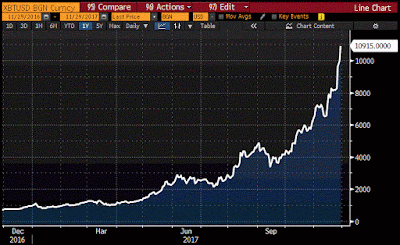Canadians Feel Financial Services Have Become Less Affordable
According to the Legatum Prosperity Index 2017.
Canada fell to 8th in the world from 5th (out of 149) in the overall rankings.
Canada fell to 8th in the world from 5th (out of 149) in the overall rankings.
Meanwhile Canada's banks are announcing record profitability, led by significant increases in earnings from wealth management.
Connecting the proverbial dots: Canadians appear to be paying more for financial services but appear to be less aware of how to find other options beyond banks.
In fact, reading further into the report: "Canadians now feel that the government is doing less to counter monopolies; as a result, for the first time in ten years, the US has regained its advantage in Economic Quality over Canada".
And: "The nation's entrepreneurial environment suffered too, as people feel less convinced that working hard will get them ahead".
I read personal income taxes into the latter statement, the impact on professional corporations (doctors, dentists, etc.) from new tax measures will not make this any better.
In fact: "Canada has also struggled considerably in the last decade in Health and fell considerably in this pillar in 2017".
If we don't allow our health care professionals better financial lives, we will be less able to keep the best and brightest in this field and we all suffer, especially as the population ages and more medical professionals are needed.
But, I digress.
What needs to happen is that Canadians need to be made aware that there are great quality (well-regulated) options for wealth management services outside of the traditional bank / investment dealer offerings.
You can have your bank accounts with your favourite deposit taking institution, but it does not mean that you have to save and invest through them at "increasingly unaffordable" costs. With modern technology (electronic fund transfers), moving money between financial institutions (big and small) has become safe, fast and easy.
There are alternatives for saving and investing and what we do at High Rock is one of them. We can offer a superior wealth management experience (wealth forecasting, risk management, fiduciary duty and personal service) at a very reasonable cost (likely not much more than a robo-advisor after all costs are considered).
We just need to get that message out there, but we can't compete with the advertising budget of the big banks.
So my friends, we need your to help spread the word: forward this blog on to someone that you think might be interested!

























